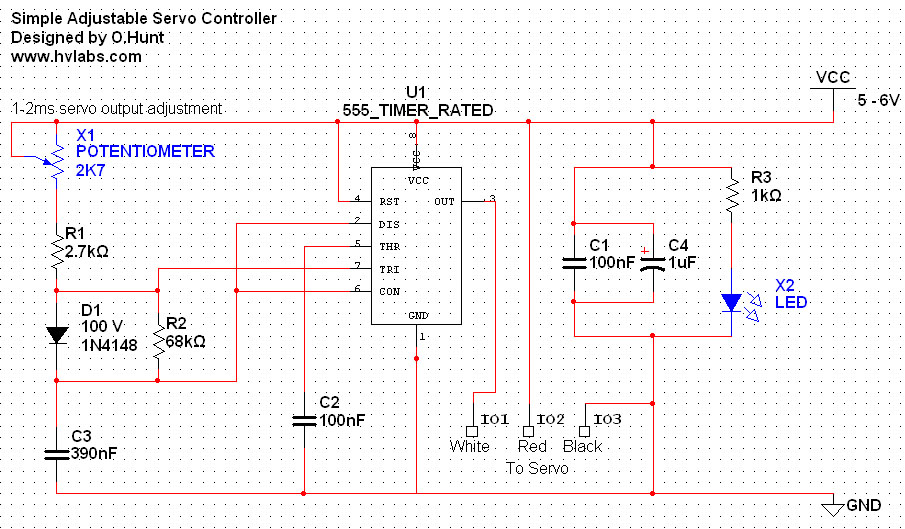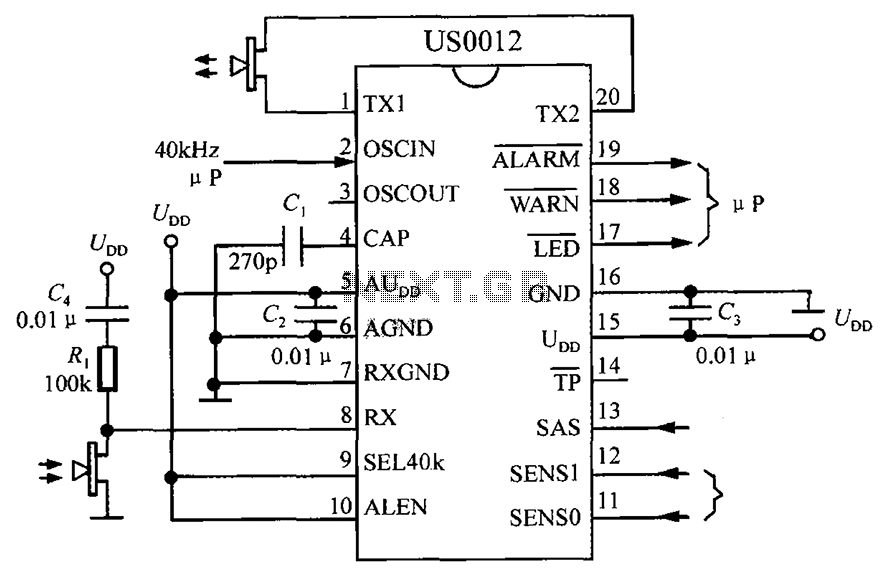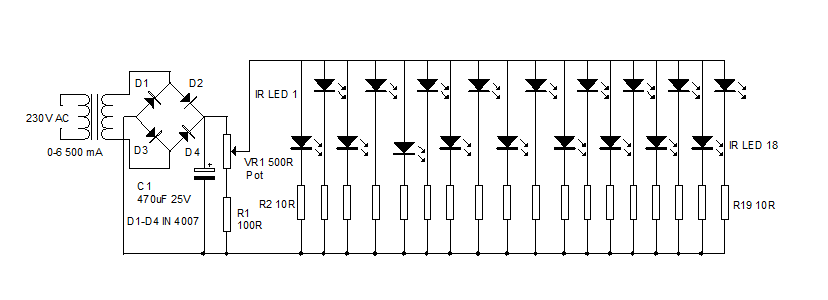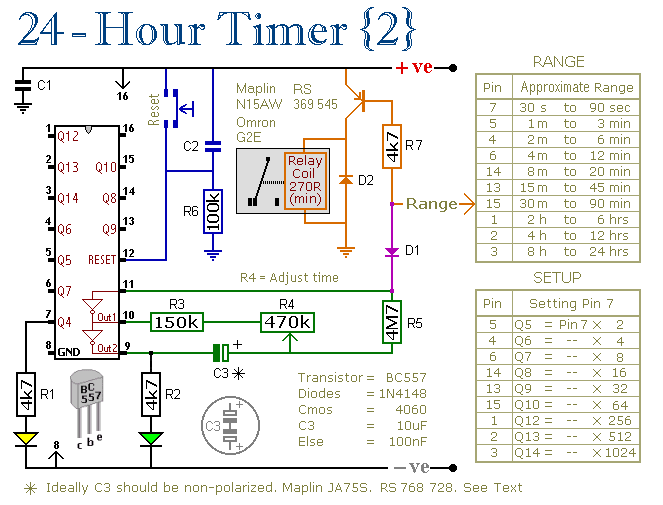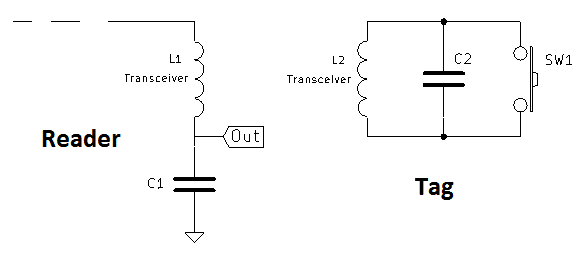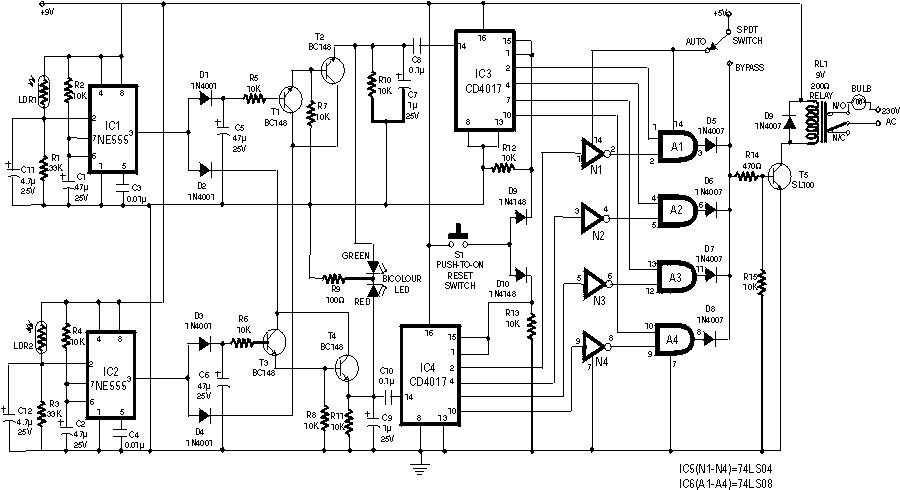
Simple Moisture DetectorCircuit Based On The 4093 IC
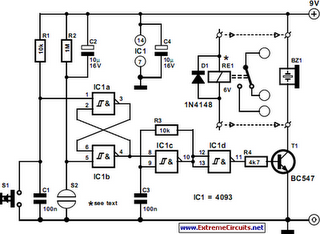
The following circuit illustrates a Simple Moisture Detector Circuit Diagram. This circuit is based on the 4093 IC. Features include the ability to detect a certain level of moisture.
The Simple Moisture Detector Circuit utilizes the 4093 integrated circuit, which is a quad NAND gate with Schmitt trigger inputs. This component is chosen for its capability to provide stable switching characteristics, which are essential for moisture detection applications. The circuit typically consists of a few additional passive components, including resistors and capacitors, configured to establish the desired sensitivity and response time.
In operation, the moisture sensor typically consists of two conductive probes that are inserted into the soil or the medium being monitored. When moisture is present, it creates a conductive path between the probes, altering the voltage level at the input of the 4093 IC. The Schmitt trigger action ensures that the output switches cleanly and reliably between high and low states, depending on the moisture level detected.
The output from the 4093 can be connected to various devices, such as an LED indicator, which turns on when moisture is detected, or it can trigger a relay to activate a watering system. The circuit can be powered by a simple battery or an external power supply, making it versatile for different applications.
To enhance the circuit’s performance, additional components such as variable resistors can be included to adjust sensitivity, and capacitors can be added to filter noise and stabilize the circuit operation. Overall, this Simple Moisture Detector Circuit is a practical solution for monitoring moisture levels in agricultural and gardening applications, ensuring optimal conditions for plant growth.The following circuit shows about Simple Moisture Detector Circuit Diagram. This circuit based on the 4093 IC. Features: when a certain moisture .. 🔗 External reference
The Simple Moisture Detector Circuit utilizes the 4093 integrated circuit, which is a quad NAND gate with Schmitt trigger inputs. This component is chosen for its capability to provide stable switching characteristics, which are essential for moisture detection applications. The circuit typically consists of a few additional passive components, including resistors and capacitors, configured to establish the desired sensitivity and response time.
In operation, the moisture sensor typically consists of two conductive probes that are inserted into the soil or the medium being monitored. When moisture is present, it creates a conductive path between the probes, altering the voltage level at the input of the 4093 IC. The Schmitt trigger action ensures that the output switches cleanly and reliably between high and low states, depending on the moisture level detected.
The output from the 4093 can be connected to various devices, such as an LED indicator, which turns on when moisture is detected, or it can trigger a relay to activate a watering system. The circuit can be powered by a simple battery or an external power supply, making it versatile for different applications.
To enhance the circuit’s performance, additional components such as variable resistors can be included to adjust sensitivity, and capacitors can be added to filter noise and stabilize the circuit operation. Overall, this Simple Moisture Detector Circuit is a practical solution for monitoring moisture levels in agricultural and gardening applications, ensuring optimal conditions for plant growth.The following circuit shows about Simple Moisture Detector Circuit Diagram. This circuit based on the 4093 IC. Features: when a certain moisture .. 🔗 External reference
